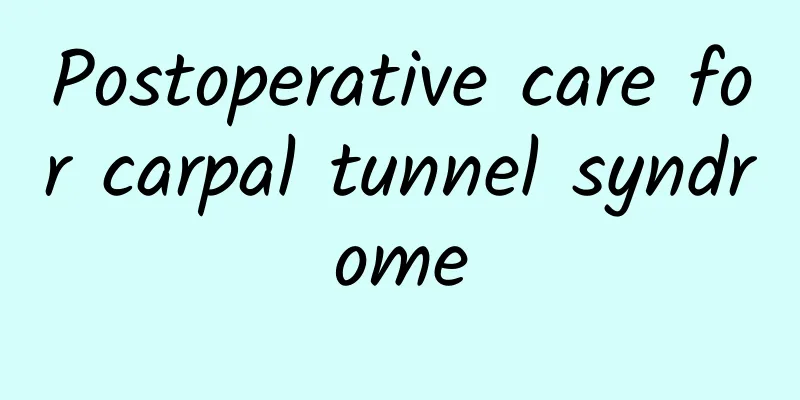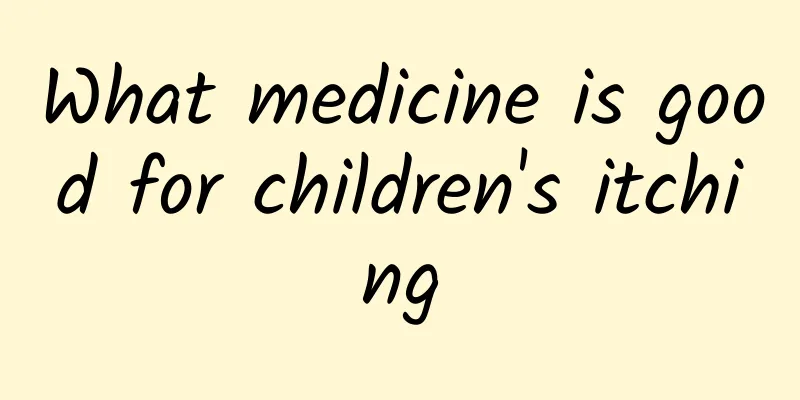Postoperative care for carpal tunnel syndrome

|
I believe that many people do not know much about the symptoms of carpal tunnel syndrome, which makes it difficult for many patients to understand its treatment methods and care measures. When carpal tunnel syndrome occurs, the patient will experience abnormal heart levels and pain in the limbs. The patient needs to take rehabilitation measures after treatment, adjust his or her mood, and persist in exercise. The specific care methods are based on the practices below. Nursing 1 Preoperative care CTS patients have a long course of illness and have received conservative treatment before surgery, but the effect is not good. Therefore, they have many concerns about surgical treatment. Nurses should do a good job of publicity and education to help patients eliminate tension and cooperate with surgical treatment in a better psychological state. 2. Postoperative nursing observation Nursing observation of affected limb After the patient's surgery, the patient's affected limb should be kept above the level of the heart, and the patient's peripheral circulation of the affected limb should be closely observed. It is also necessary to observe the color, temperature, swelling, and functional recovery of the affected limb. After the operation, the patient should be kept warm so that he or she can recover as soon as possible. Anti-infection nursing observation Anti-infection care after surgery is very important to the patient's health. Usually, after the patient's surgery, antibiotics need to be used reasonably and the patient's wound should be kept clean and dry. During the nursing process, if the body temperature rises and there are obvious local redness and swelling and other related phenomena, it means that the patient may have a wound infection and should understand and take appropriate treatment. Pain care Postoperative pain care is also a very important part of postoperative care and is receiving increasing attention. If the pain after surgery is not properly taken care of, it may affect the patient's vital signs, diet, sleep and rest, which will affect the patient's recovery. Therefore, after the patient has undergone surgery, attention should be paid to the patient's pain care and active and reasonable analgesic measures should be taken [2]. During the pain care process, appropriate measures should be given to the patient based on the patient's specific pain condition, such as the nature and severity of the pain, and in combination with the patient's description. Patients can be helped to relieve pain by diverting their attention, using analgesics appropriately, and other related measures. Hemostasis nursing observation Observe the bleeding and blood circulation. To prevent blood accumulation and adhesion in the incision after neurolysis, the tourniquet should be used properly during the operation, with emphasis on minimally invasive surgery and microsurgery. After the operation, an elastic bandage should be used for pressure dressing. After the operation, closely observe the incision bleeding, fingertip blood circulation, and pay attention to the finger color, temperature, and capillary filling reaction. If the finger color is pale or dark purple, the skin temperature is low, or the capillary filling reaction is too fast or lost, loosen the tight dressing and restore the blood circulation to the finger. After the operation, closely observe the thumb palm function and understand whether the recurrent branch of the median nerve is damaged. Observe whether the palm skin is numb and understand whether the palmar cutaneous branch is damaged. Diet care Fasting for 4 to 6 hours after the operation, eat more high-protein foods such as fish and lean meat, and eat more foods rich in vitamins, especially foods rich in vitamin B1 (such as corn, millet, millet, oats, mustard, beans), to increase nerve nutrition and promote nerve recovery. 4 Rehabilitation care Functional exercise: After median nerve release, early functional exercise is a necessary measure to prevent nerve and tendon adhesion. Generally, the elastic bandage can be removed 24 to 48 hours after surgery, and the patient can be instructed to perform flexion and extension of the metacarpophalangeal joints, interphalangeal joints, and thumb flexion, adduction, and palm-to-palm movements. Methods: Use elastic finger trainers and finger muscle training tables to train the range of motion of interphalangeal joints and wrist joints and finger muscle strength, train the thumb to be opposite to the other four finger pads, and pinch various objects with a frequency of 10 to 15 times/min and 2 to 3 times/d. If there is no redness or swelling around the incision 5 to 6 days after surgery, the training intensity can be increased. The specific intensity depends on the patient's condition. After the sutures are removed, electrotherapy, ultrasound, wax therapy and other measures can be used to inhibit scar hyperplasia. After 2 to 3 weeks, resistance exercise training for the thumb can be performed to promote the thickening of the thenar muscle fibers, increase muscle strength, and restore coordinated hand movements. The exercise intensity should be increased from small to large, and the number of times should be increased from small to large. The amount of exercise each time should be within the tolerance of the affected limb, and proceed step by step. Patients in this group were generally discharged 7 days after surgery. Before discharge, they were taught exercise methods and given exercise plans, and were followed up regularly. Most patients were able to return to work 2 weeks after surgery, and their grip strength returned to normal 2 months later. |
<<: There is a hard lump in the anus but no blood in the stool
Recommend
Does drinking liquor lower blood pressure?
Drinking too much alcohol will cause alcohol pois...
What causes dizziness and stomachache?
Sometimes we have inexplicable stomach pain, and ...
Effects and contraindications of moxibustion ash
As we all know, mugwort is a traditional Chinese ...
What are the functions and effects of pomegranate peel?
Many people love pomegranates, but in fact, the p...
How to treat gas pimples
Poison pimples is a folk name. The so-called pois...
Treatment of dizziness caused by cervical spondylosis, common treatment methods
Do you have cervical spondylosis? Many office wor...
What to do if you have a severe runny nose due to a cold
If the runny nose due to a cold is severe, you mu...
How the Dehumidifying Foot Patch Works
Most people nowadays have irregular lives and eat...
How to prevent loose teeth
The teeth of the elderly are prone to loosening. ...
Menstruation came again in less than 20 days
Under normal circumstances, women will have menst...
Causes of myocardial ischemia
The continuous improvement of modern people's...
What does left adnexal mass mean?
The left adnexal mass refers to adnexitis, or it ...
Causes of stroke
Stroke is a general term for acute brain diseases...
What to do if transaminase is high during pregnancy
The pregnancy period is the key protection period...
The difference between Chinese yam and tuckahoe
Traditional Chinese medicine is profound and exte...









